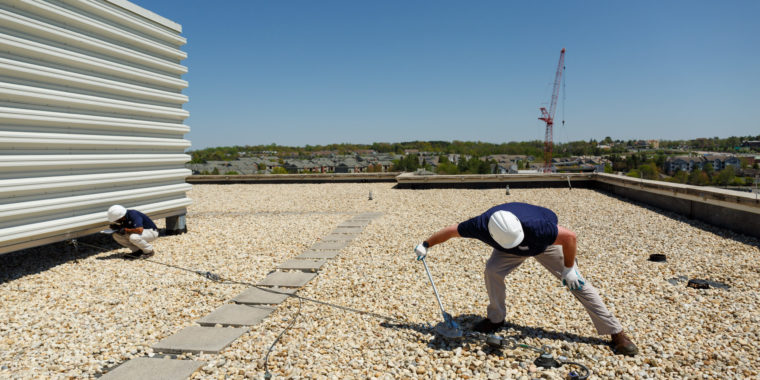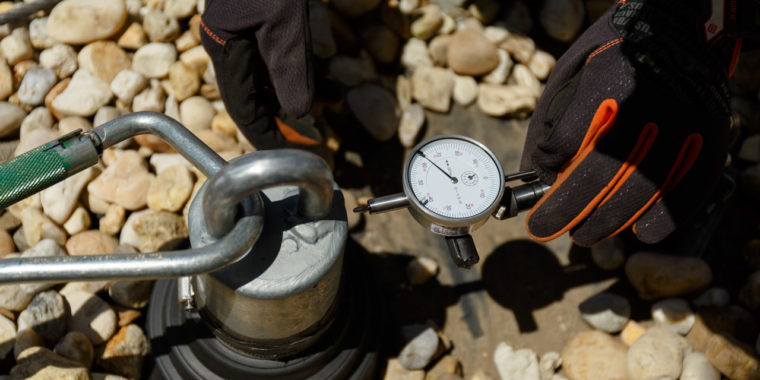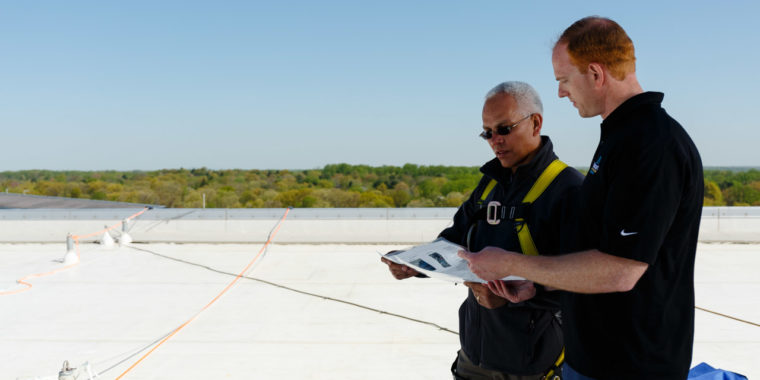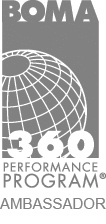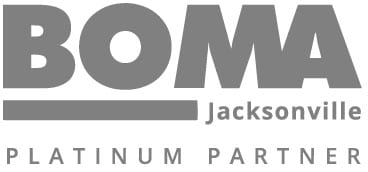Want to reduce your compliance workload while improving your building’s safety? Our SafeSite program simplifies OSHA (Occupational Safety and Health Administration) safety compliance for buildings, specifically for façade access and fall protection equipment. As a SafeSite Program member, you’ll benefit from expertise, testing and certification, inspections, risk mitigation, and training.
Our comprehensive approach to compliance oversight reduces the stress of staying current with evolving compliance regulations and removes the administrative burden. With fines and inspections increasing each year, compliance isn’t something worth leaving to chance. This article explains how the SafeSite program offers the easiest path to meeting compliance standards.
Navigating Through Building Compliance Complexity
With compliance regulations and safety audits, there’s always that concern, “Did we miss something?”. For instance, can you provide supporting documentation of annual anchor inspections and employee safety training? The consequences of noncompliance are steep, with one contractor receiving over $1 million in fines for repeatedly exposing workers to fall hazards.
Our team of experts is deeply entrenched in building compliance regulations and industry standards, so you don’t have to be. As a SafeSite customer, we help you develop a path to achieve compliance and keep you compliant. Our consultative approach leverages proactive communications, building reviews, and training. We know compliance can be a burden and can easily consume a big chunk of your time. Our SafeSite program provides you the opportunity to forego this burden and devote your time where it’s needed most.
Your Safety Compliance Ally
A1 is your compliance ally, helping you navigate regulations. The primary focus of our SafeSite services includes anchor inspections, certifications, and testing to meet OSHA’s varying compliance cadence. When we perform these services, we also address non-compliant areas and make a plan with the client so that they can become compliant.
We do this through our Five Pillars:
- Dedicated Team of Compliance Experts – Our team solidifies its expertise in the field, completing over 1,500 rooftop anchor inspections each year. Our team is available where and when you need them, and we are there to focus on all your compliance requirements.
- Commitment to Safety & Compliance Standards – Our window cleaners, for instance, rely on the same fall protection equipment we help design, install, and certify. This isn’t a responsibility we take lightly. Our commitment to safety shines in our ability to not only meet industry standards but exceed them.
- Exterior Building Maintenance Expertise – A1’s building services teams frequently work at heights, performing not only window cleaning services but also façade repair and restoration, waterproofing, and rapid leak investigation. This expertise is invaluable to training, learning, and reducing the risks of fall-related incidents.
- Professional Engineer Partnerships – Just as we count on you to trust us and our expertise, we rely on third-party engineers to help design, certify, and inspect our rooftop anchor systems. In addition to receiving your final certification report, you’ll receive the added assurance of meeting compliance regulations.
- Annual Anchor Inspections – OSHA requires annual inspections by a qualified person. After our team completes your required inspection, we provide a fall protection assessment and a comprehensive report. This confirms that you meet the inspection requirement and gives you an action plan to maintain compliance.
We believe in eliminating risk first and foremost, and when that isn’t possible, we provide the next best line of defense through fall protection systems. Our turnkey approach to safety decreases your liabilities, reduces the stress of the unknown, and gives you back the precious resource of time.
Tailored Plans for Tailored Needs
We know not all buildings and budgets are the same. During our building review, we pinpoint any shortfalls in documentation and record-keeping. From there, we dive into compliance requirements and budgetary considerations to identify the best path to bring your rooftop safety into full compliance. You can count on our SafeSite team to tend to your building’s compliance services, including inspections and certifications of anchors.
We get to know your building, which aids in identifying unique risks. Armed with this knowledge, we ensure our third-party engineer identifies and inspects various types of anchor points for integrity and feasibility with your building’s structure. Increasing safety, ensuring compliance, and decreasing liabilities isn’t a one-size-fits-all approach. For this reason, we designed our SafeSite program to be comprehensive and flexible, providing you with a one-stop shop for safety compliance.
Key Benefits of Joining SafeSite
For good reason, OSHA will continue to focus heavily on inspections, fines, and awareness campaigns to reduce safety incidents. With SafeSite, you gain a dedicated team of compliance experts, consultation resources, compliance and safety reports, and more. Here are more ways we ease compliance oversight.
Streamlined Compliance Documentation
Documentation plays a critical role in meeting requirements. Our SafeSite Portal keeps you organized with easy access to compliance documents, inspections, testing reports, certifications, and compliance proposals. In addition, the portal helps you stay informed with our education tools, compliance manual, and other resources.
Proactive Risk Management
A proactive approach is the best way to mitigate risk in an environment of rapidly evolving regulations. We take pride in our industry expertise and leverage this knowledge to keep our customers informed through updates and their journey toward meeting compliance regulations. Staying ahead of regulations helps minimize potential legal and safety risks.
Optimizing Time and Resources
As a building owner, you have a lot on your plate. Attempting to manage compliance oversight on your own could result in you stepping over dollars to save a dime. We offer a strategy to optimize your time and resources while assuring your building achieves compliance standards.
Simplified Compliance Oversite with SafeSite
You don’t need to wonder if your building meets compliance requirements. With SafeSite, we take a consultative approach to informing our clients about rooftop safety. The program reduces your compliance risk by covering annual anchor inspection requirements as well as testing and certification. Our combination of industry knowledge backed with hands-on expertise helps spot safety risks and provide fall hazard analyses to deliver you the easiest path to achieving and maintaining building compliance.
To take the first step towards confidence in compliance, you can review your rooftop safety with our Fall Hazard Assessment. Contact us today and see the difference we can make in your building compliance strategy.


